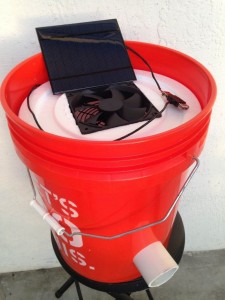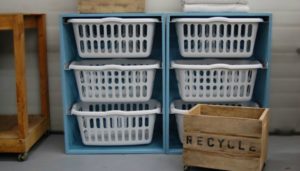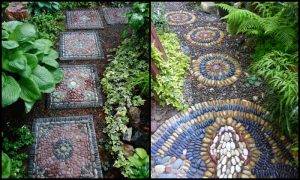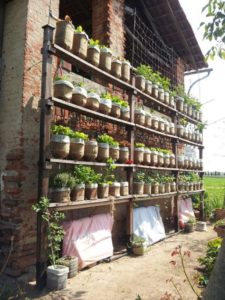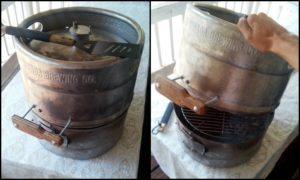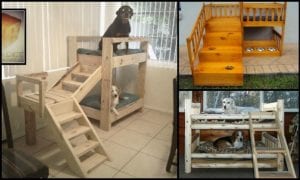Last Updated on February 19, 2025 by teamobn
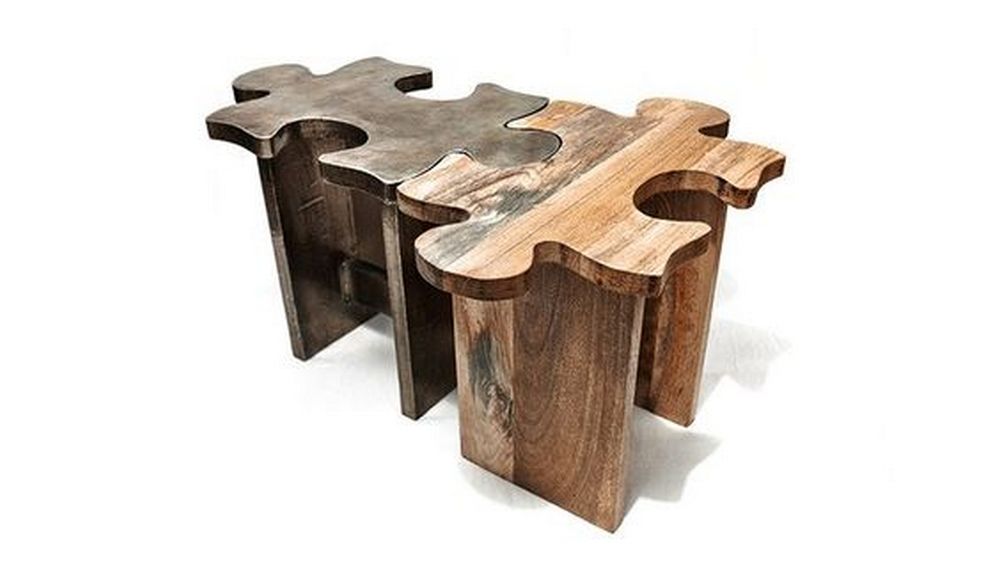
This DIY puzzle coffee table or stool project is perfect for puzzle lovers!
Since we were little, we have been exposed to various “brain” games. Among all the games my mother had introduced to us, my favourite is the Puzzle. We used to have those really huge ones which would take us a month to finish. I remember feeling a great sense of accomplishment when we finally solved them.
These days, there are many apps and websites that offer puzzles and other brain games. I often find myself spending a few minutes on one of these games when I need a break from work. I find them to be a great way to relax and exercise my brain at the same time.
Puzzles are a great way to entertain yourself and others. They can help improve your problem-solving skills and memory, while also providing a fun and challenging activity. There are a variety of puzzles to choose from, so everyone can find ones that they love and enjoy. Whether you’re a fan of crosswords, jigsaw puzzles, or Sudoku, there’s a puzzle out there for you.
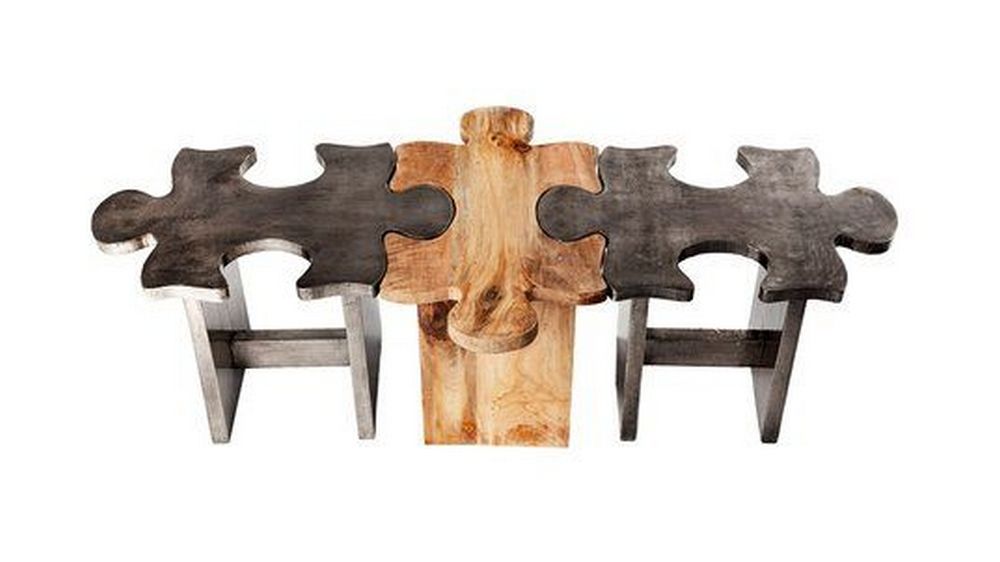
When I started to have a family of my own, I promised myself I would introduce puzzles to my kids someday. I did, and fortunately, my kids loved it as well. Now, puzzles are a regular part of our family’s fun time. They help us bond and work together as a team, and we always have a great time.
They’d rather work on a puzzle than watch TV. As a way of encouraging them to continue using their cognitive skills, my husband and I decided to build a table for them in the playroom. This would be a designated space for them to work on puzzles, and we would also be able to monitor their progress. By doing this, we hope that they will be more engaged in their playtime and continue to challenge themselves.
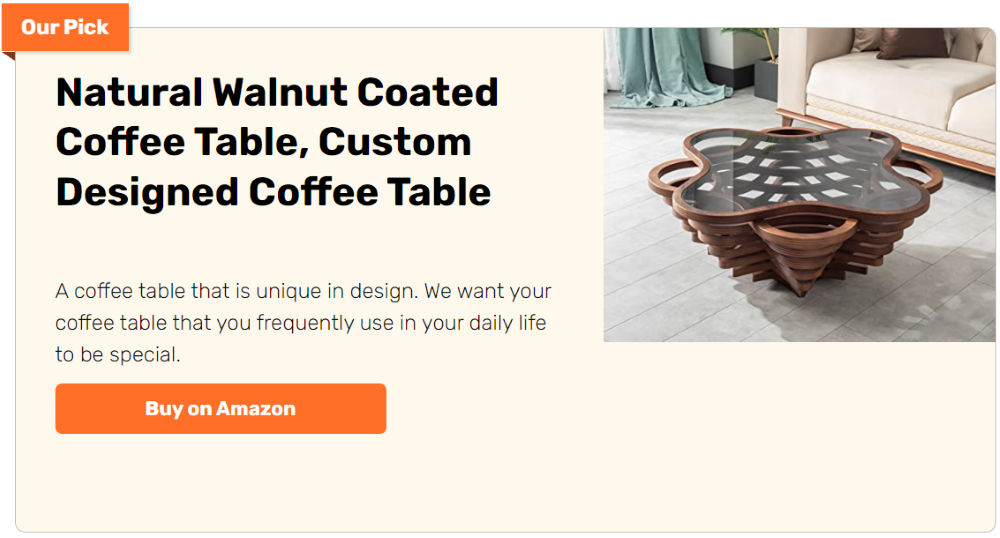
We were looking for a unique table and chair set for our game room and came across this puzzle-themed set online and decided to make our own. This puzzle coffee table or stools were indeed a great addition to our living space. We loved the rustic colours and the playful design. The puzzle coffee table set was very easy to assemble and very sturdy.
The kids were so happy with the finished product. We’ve had it for several months now and it’s still one of our favourite pieces in the room. If you and your family are into puzzles, this DIY puzzle coffee table or stool project is perfect for you. You get new furniture and you also get to have fun!
Well, if you’re looking for a unique and fun DIY project for your home, why not try making a puzzle coffee table or stool? This project is easy to do and can be customized to your own personal style. Plus, it’s a great way to spend some quality time with your family.
Contents [show]
Building a Puzzle Coffee Table
Materials:
- ¾” Plywood
- 1¼” wood screws
- 1” Diameter Dowels – 48” Long
- 1/2” Diameter Dowels – 48” Long
- Wood Glue
Tools:
- Cordless Drill
- Jig Saw
- 220 Grit Sand Paper
Steps:
Step 1: Prepare the Materials
Before you start cutting, ensure you have all the necessary materials and tools ready. Work on a flat, clean surface and wear safety gear like goggles and gloves.
Step 2: Design and Mark the Puzzle Pieces
- Lay the ¾” plywood flat on your workspace.
- Using a pencil and ruler, sketch out your puzzle table design. The tabletop should consist of interlocking puzzle pieces that fit together.
- Mark the locations where the 1” dowels will serve as legs and where the ½” dowels will reinforce connections.
Step 3: Cut the Puzzle Tabletop Pieces
- Use a jigsaw to carefully cut out the puzzle-shaped edges of your tabletop.
- Take your time to ensure precise cuts so the pieces fit together smoothly.
- Sand the edges with 220-grit sandpaper to remove rough edges.
Step 4: Drill Holes for Dowels
- Determine where you want to attach the 1” dowels as table legs.
- Use a cordless drill to create evenly spaced holes at the bottom of each puzzle piece where the legs will be inserted.
- Drill ½” holes where smaller dowels will act as supports for added stability.
Step 5: Assemble the Puzzle Tabletop
- Apply wood glue to the edges of the puzzle pieces where they interlock.
- Fit the puzzle pieces together tightly and clamp them if needed.
- Let the glue dry according to the manufacturer’s instructions.
Step 6: Attach the Table Legs
- Apply wood glue to one end of each 1” diameter dowel (table legs) and insert them into the drilled holes.
- Secure each leg with 1¼” wood screws to reinforce the attachment.
- If using additional ½” dowels as bracing, insert them in the pre-drilled holes and glue them into place.
Step 7: Sand and Finish the Table
- Once the glue has dried and the table is fully assembled, sand all surfaces with 220-grit sandpaper for a smooth finish.
- If desired, apply paint, stain, or a clear protective finish to enhance durability and aesthetics.
Step 8: Let It Dry and Enjoy!
- Allow the table to fully dry before use.
- Place it in your desired location and enjoy your custom puzzle coffee table!
For a visual guide, check out the video below:
Design Variations for a Puzzle Coffee Table
A puzzle coffee table is more than just a functional piece of furniture—it’s an interactive and customizable design element that can fit different styles and needs. Whether you want a playful addition to your living space or a sophisticated, modular design, there are many ways to personalize your DIY puzzle coffee table.
Interlocking Modular Pieces
Instead of a single tabletop, create a set of interlocking puzzle pieces that can be rearranged. This design allows flexibility, letting you separate pieces for individual use or connect them to form a larger surface.
Storage-Integrated Puzzle Table
Adding storage beneath the tabletop makes the puzzle coffee table even more practical. You can incorporate hidden compartments, drawers, or lift-up sections to store books, board games, or remote controls.
Convertible Puzzle Table and Stool Set
Design the puzzle pieces to function as both a coffee table and separate stools. When connected, they form a complete tabletop, but they can be pulled apart to provide additional seating when needed.
Multi-Level Puzzle Table
For a more dynamic look, create a multi-tiered puzzle coffee table with varying heights. This design adds depth and dimension to the table, making it an eye-catching centerpiece for modern interiors.
Glass and Wood Combination
Incorporating glass panels between puzzle-shaped wooden sections adds a contemporary touch. This variation gives the table a sleek, elegant look while still maintaining the playful puzzle concept.
Rustic Wooden Puzzle Table
Using reclaimed wood or a distressed finish can give the puzzle coffee table a rustic charm. The natural wood grain and uneven textures enhance the handmade feel, making it a warm addition to farmhouse-style interiors.
Bright and Colorful Puzzle Design
For a fun, kid-friendly version, paint each puzzle piece in different vibrant colors. This works well in playrooms or casual spaces where creativity and a playful atmosphere are encouraged.
Minimalist Puzzle Coffee Table
A minimalist design features smooth, rounded puzzle edges and a monochrome or neutral finish. This variation suits modern and Scandinavian-inspired spaces, focusing on clean lines and simplicity.
No matter your design variation, a puzzle coffee table is a creative way to blend functionality with personal style. Would you like suggestions on how to style it in different room settings?
Puzzle Coffee Table Gallery
Click on any image to start the lightbox display. Use your Esc key to close the lightbox.

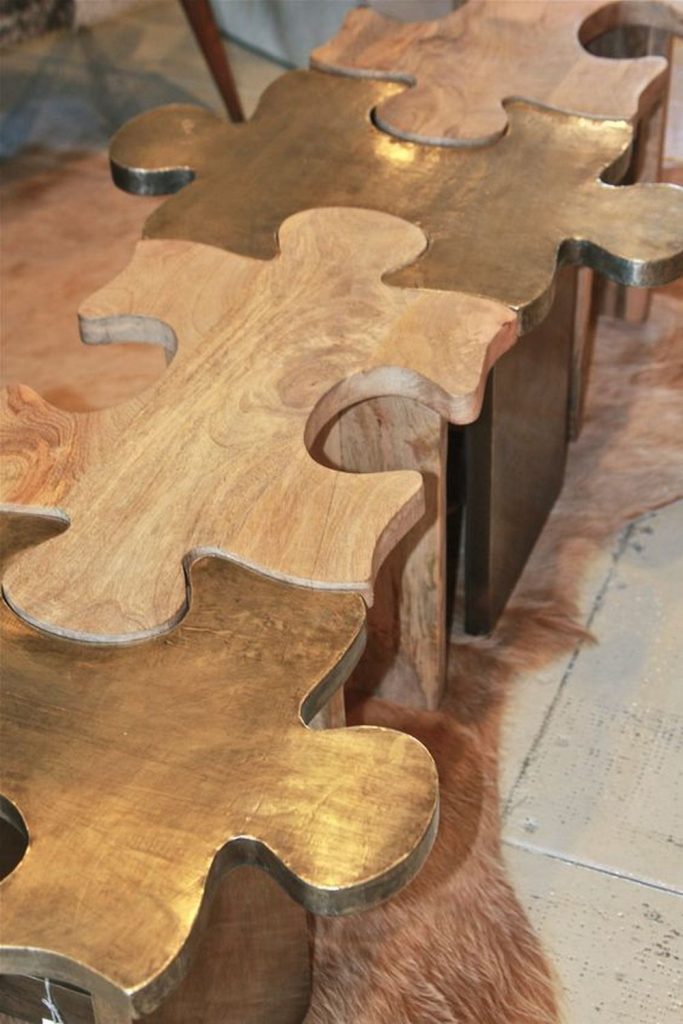
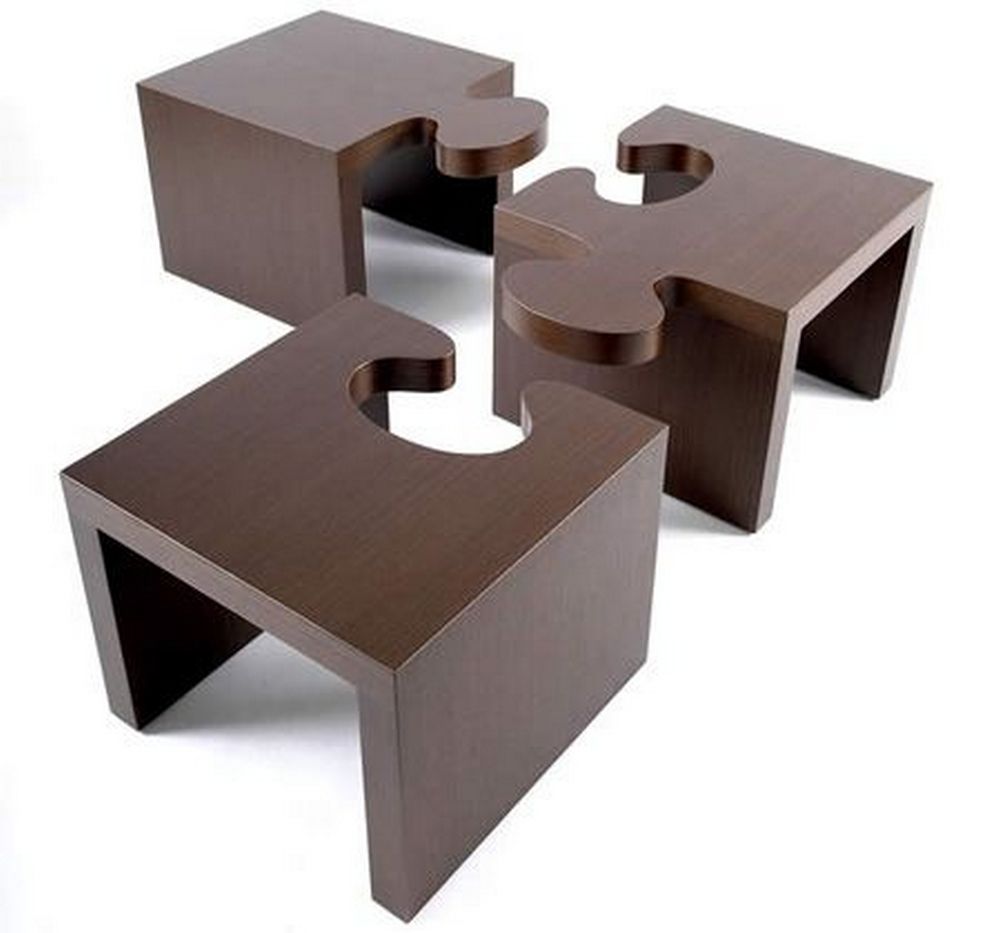


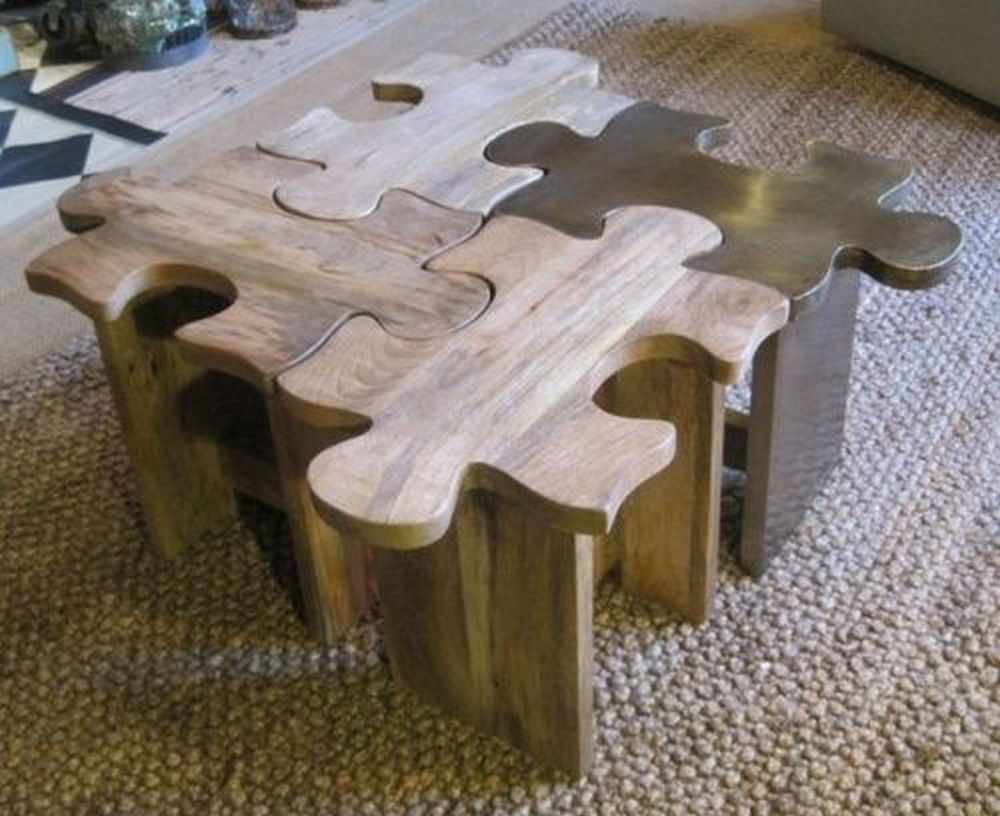
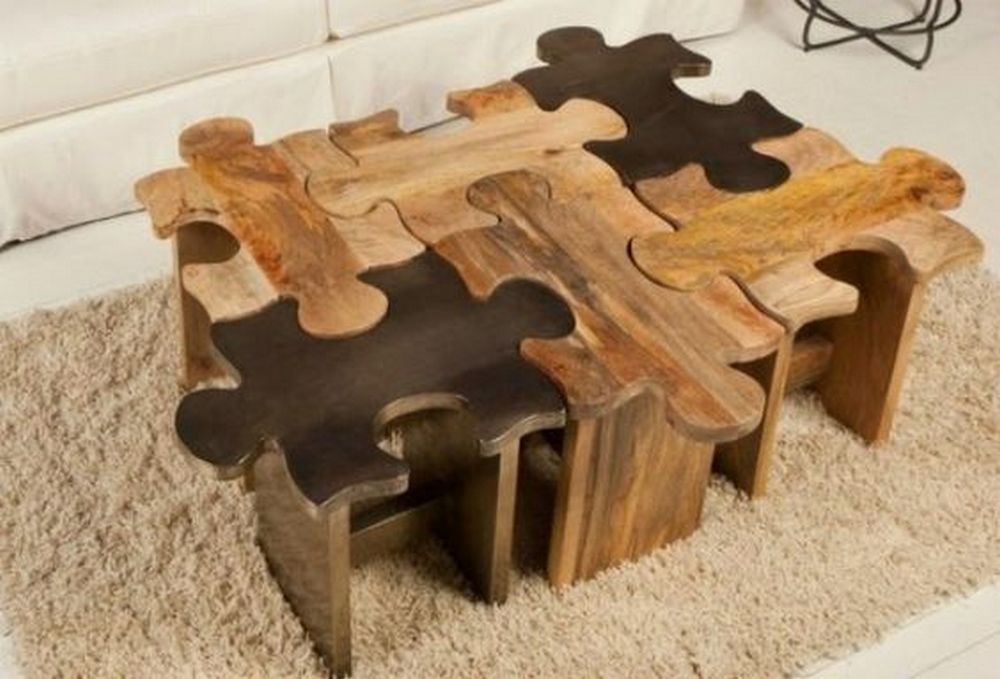
Choosing the Right Wood and Finish for Your Puzzle Table
Selecting the right wood and finish is essential to building a puzzle coffee table that is both durable and visually appealing. The type of wood you choose will determine the table’s sturdiness, while the finish enhances its look and protects it from wear. Whether you prefer a rustic, modern, or playful style, understanding your options can help you achieve the perfect result.
Best Wood Types for a Puzzle Coffee Table
The type of wood you select affects not only the appearance but also the longevity of your puzzle coffee table. Some woods are better suited for heavy use, while others offer a refined aesthetic.
- Plywood – A cost-effective and easy-to-work-with material, plywood is a great choice for DIY builders. It is lightweight, readily available, and can be finished with paint or veneer to achieve different looks.
- Hardwood (Oak, Maple, Walnut) – If you want a strong and durable puzzle coffee table, hardwoods are the best option. Oak provides a traditional and sturdy design, maple offers a smooth grain for a clean look, and walnut brings a rich, dark tone that adds sophistication.
- Softwood (Pine, Cedar) – Softwoods are a budget-friendly alternative that can still provide a beautiful finish. Pine is easy to stain or paint, while cedar naturally resists moisture, making it ideal for humid environments.
- Reclaimed Wood – For a unique, eco-friendly touch, it offers character with its aged textures and natural imperfections. This is a great option for those who want a rustic or vintage puzzle coffee table.
Selecting the Right Finish
A good finish enhances the beauty of the wood while protecting it from spills, scratches, and daily use. Depending on the look you want, various finishes can be chosen.
- Stain – Wood stains enhance the natural grain and color of the wood. Lighter stains highlight the wood’s natural patterns, while darker stains give it a rich, elegant appeal. Staining is ideal for those who want a traditional or rustic aesthetic.
- Paint – Painting allows for full customization. Whether you choose bold, vibrant colors for a playful design or neutral tones for a modern feel, paint can transform the look of your puzzle coffee table. Consider using non-toxic, water-based paints if you’re making a kid-friendly version.
- Clear Polyurethane – A clear coat of polyurethane provides a protective layer without changing the natural color of the wood. Available in matte, satin, or glossy finishes, it helps protect against water damage and daily wear.
- Wax or Oil Finish – For a softer, more natural look, wax or oil finishes enhance the wood’s texture without creating a thick, glossy surface. These finishes require occasional reapplication but offer a warm, organic appearance.
Bringing It All Together
Choosing the right wood and finish ensures that your puzzle coffee table is functional and fits your personal style. Hardwoods provide durability, softwoods allow easy customization, and reclaimed wood adds character. Whether you go for a stained, painted, or clear finish, the right choice will make your project stand out. Would you like recommendations on complementary decor styles to match your puzzle coffee table?
The Benefits of Puzzle Furniture in Child Development
Puzzle furniture, like a puzzle coffee table, is more than just a stylish and interactive piece of home decor. It plays a significant role in a child’s development by promoting cognitive skills, creativity, and hands-on learning. Whether used as a play table, activity station, or seating arrangement, this type of furniture engages children in ways that traditional tables do not.
Enhancing Problem-Solving and Critical Thinking
One of the most significant benefits of puzzle furniture is that it naturally encourages problem-solving. Children learn how different pieces fit together as they interact with a puzzle coffee table. This process strengthens their ability to recognize patterns, understand spatial relationships, and develop logical thinking skills. The trial-and-error aspect of assembling or adjusting the table reinforces patience and perseverance.
Improving Fine Motor Skills and Hand-Eye Coordination
Manipulating puzzle pieces—whether tabletop sections or interlocking stools—requires precision. Children must grasp, align, and fit pieces into place, which enhances their fine motor skills and hand-eye coordination. These small but essential movements help develop muscle control, making everyday tasks like writing, drawing, and tying shoelaces easier as they grow.
Encouraging Independent and Collaborative Play
A puzzle coffee table provides opportunities for both independent play and teamwork. When children work alone, they develop self-reliance and problem-solving abilities. In a group setting, they learn to communicate, share ideas, and cooperate to complete the puzzle or arrange the furniture pieces. This fosters teamwork and strengthens social skills.
Stimulating Creativity and Imagination
Unlike standard furniture, puzzle-themed tables allow for flexible configurations and imaginative play. A child may see the pieces as a game, a castle, or a secret hideout, depending on how they arrange them. This open-ended interaction supports creative thinking and encourages children to explore different possibilities. Adding vibrant colors or themed designs can further inspire imaginative play.
Creating a Fun Learning Environment
Having interactive furniture makes learning spaces more engaging. Whether in a classroom, playroom, or home setting, a puzzle coffee table transforms an ordinary space into an interactive learning hub. Parents and educators can incorporate letter or number puzzles into the table’s design to introduce early literacy and math concepts in a hands-on way.
Building Patience and Focus
Many children struggle with attention span, but puzzle furniture can help them develop patience and focus. Unlike digital distractions, assembling or playing with puzzle pieces requires concentration. Kids learn to work through challenges and stay engaged in an activity, improving their ability to focus on tasks in school and daily life.
Incorporating a puzzle coffee table into a child’s space isn’t just about aesthetics—it’s a way to encourage cognitive growth, creativity, and problem-solving. From fine motor skill development to teamwork and patience, puzzle furniture provides a unique and valuable learning experience. Would you like tips on making a child-friendly puzzle table with added educational elements?
Conclusion
satisfying do-it-yourself project combining design, utility, and enjoyment is building a puzzle coffee table. It gives any area a distinctive touch and provides an interactive aspect appealing to adults and children. Your puzzle table can become a lifetime focal point that brightens your house and offers functional use with the correct materials, design, and finish.
We have more creative table projects to tackle. Check out our guide on coffee tables made from old windows.

